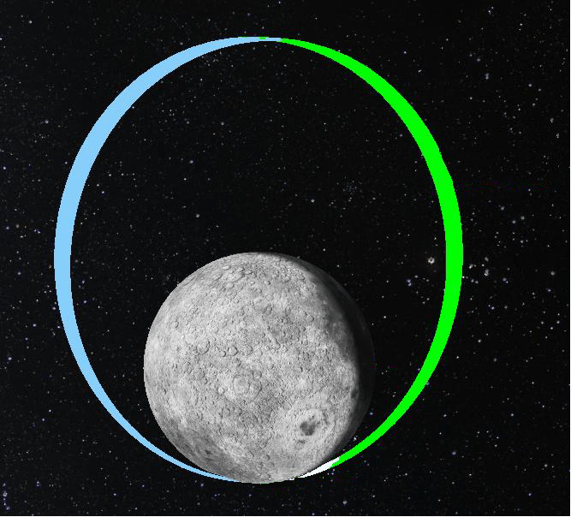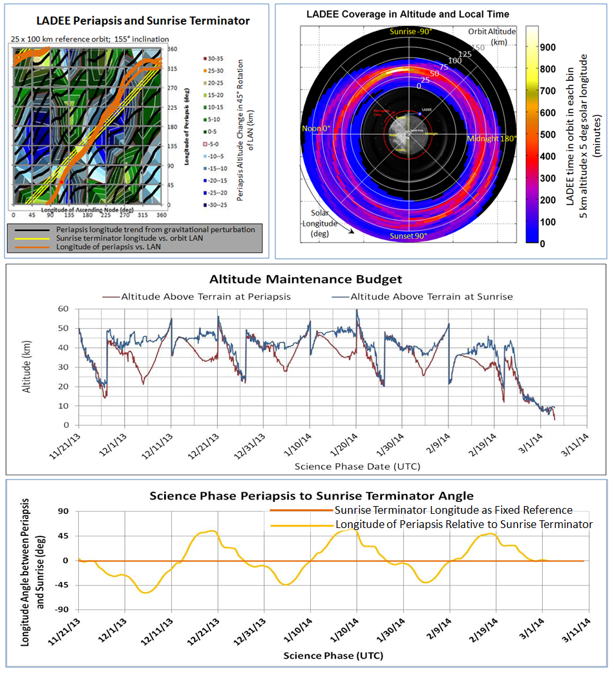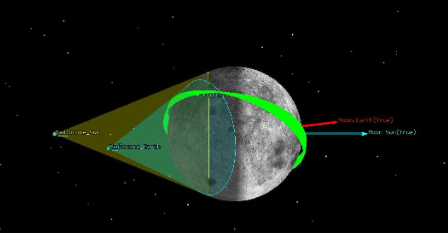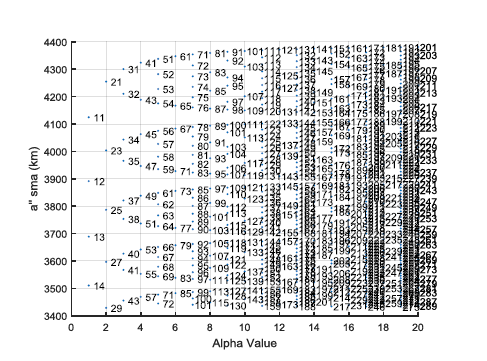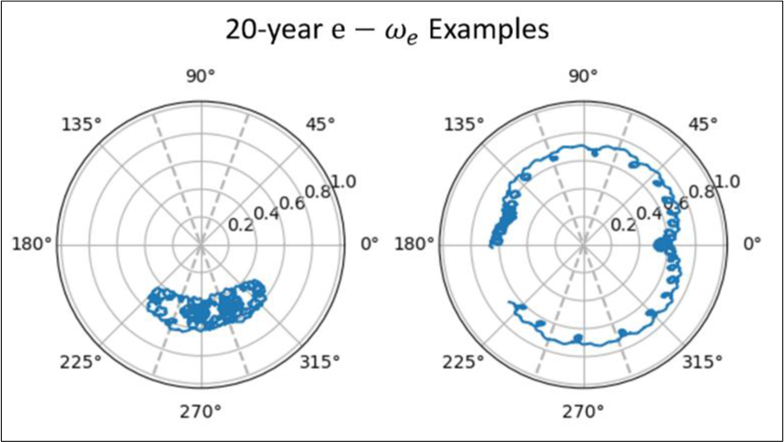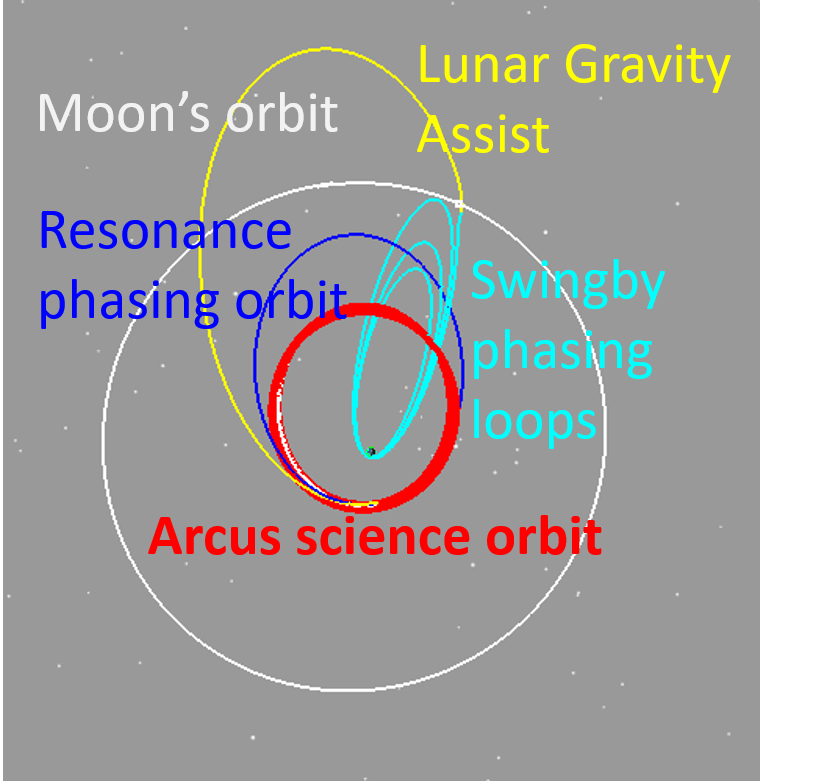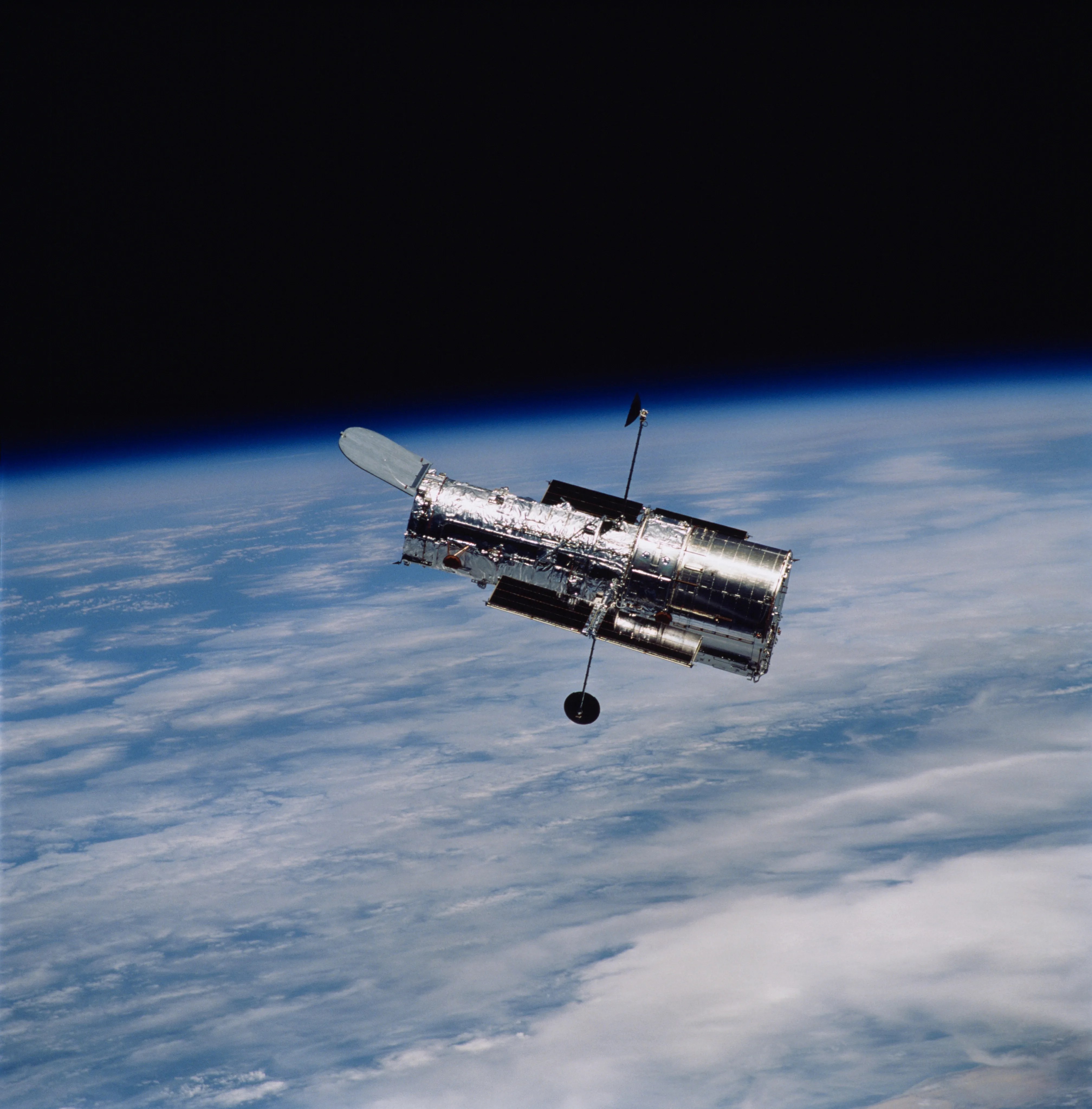Orbit Analysis
Orbit analysis is an important discipline of space mission design. It supports the formulation of the mission concept by applying the principles of orbital mechanics to enable the science investigation or tech demo goals. Some current work at Ames in orbit analysis includes
- Low altitude planetary orbits
- Spin-orbit resonance
- Cis-lunar orbits
- Earth observation
- Multi-satellite performance analysis
Through orbit analysis, the FD team can study the feasibility of the concept of operations of a given mission, proposal or flight project. This assessment may include stability analysis; producing valuable data for other subsystems (for example, access and range with ground assets, attitude, eclipse data, coverage, revisit times); evaluating the orbit performance relative to mission and engineering requirements, and computing the required propellant budget to achieve the maneuvers.
Supported projects: MAUNA, Aeolus, DAPPER, LunaH-map.
Low altitude planetary orbits
The study of low altitude orbits in other planetary bodies is a main area of expertise within the Ames Flight Dynamics team. For planets without substantial atmospheres, specifically the Moon and Mars, satellites can maintain orbits at altitudes low enough to be strongly affected by mass concentrations, mascons, in the planetary body. These orbits have several advantages for certain mission concepts. Therefore, studying the evolution of the orbital elements is fundamental to ensure the spacecraft safety, since the perturbations may induce severe changes in the orbit shape that can affect mission performance or even lead to an impact with the surface.
Low orbit perturbations on LADEE
The LADEE mission orbited the Moon from October 2013 to April 2014, with the driving requirement to have low altitude passes (below 50 km) at the sunrise terminator.
- Frame a) of the LADEE figure shows the early heritage of our Mauna toolset as a visual design aid for studying orbit perturbations with regard to the line of nodes and the line of apsides. The the design process seeks a path along the black trendlines that stays as close as possible to the yellow terminator. The orange trace represents the placement of the periselene near sunrise.
- Frame b) portrays the same data as in frame a), now with the orientation fixed to solar time on the Moon. The white “hotspot” shows the predominance of low passes near sunrise.
- Frame c) graphs the low altitude, tracking both sunrise and periselene.
- Frame d) gives quantitative information on how the periselene orientation follows the sunrise terminator.
Learn More
LADEE Flight Dynamics: Overview of Mission Design and Operations
Lunar frozen orbits for DARE and DAPPER mission concepts
DARE and DAPPER were mission concepts that proposed to take observations from the radio quiet zone on the far side of the Moon. In order to achieve this, they needed to be in a low altitude lunar orbit that allowed sufficient time in occultation from the Earth and the Sun. Therefore, it was fundamental to maintain a stable configuration of the orbital elements for the mission lifetime.
Orbit analysis for DARE and DAPPER found a unique frozen orbit at the lunar equator where the line of apsides precesses at the same rate that the Moon rotates, keeping the periselene on the lunar farside.
Learn More
DARE Mission Design: Low RFI Observations from a Low-altitude, Frozen Lunar Orbit
Spin Resonance
Mars Spin Resonant Orbits (SRO)
While the main cause of the unstable regions encountered by low altitude orbiters are the mascons in the crust of the celestial body of study, for fast spin bodies such as Mars, spin-orbit resonance effects may affect orbit stability. These effects produce repeating ground-tracks that also have implications in remote sensing capabilities, such as the difficulty to achieve full precession. Studying the evolution of the orbital elements in this situation is fundamental to ensure mission performance for Mars-orbiting assets.
Learn More
Spin Orbit Resonance and Stability in Eccentric, Low Altitude Mars Orbits
Stability and Spin-Orbit Resonance Analysis of Low Altitude Martian Orbits
Lunar Resonant Orbits (LRO)
The orbital period of a lunar resonant orbit (LRO) corresponds to a fraction of the period of the Moon’s orbit around the Earth. High altitude elliptical orbits in the Earth-Moon system rely on this phenomenon to avoid undesired lunar encounters that would alter the stability over time.
- The slow apogee speeds of highly elliptical orbits make them susceptible to long eclipses, especially if they lie in the ecliptic plane and our recent work addresses innovative mitigation strategies.
HelioSwarm LRO
The HelioSwarm mission concept uses a P/2 LRO with eccentricity that fluctuates between 0.6 and 0.7; this range of eccentricities presents several advantages. First, this places apogee near the Moon’s radius, which allows for the option of a lunar swingby with moderate post-swingby delta-v costs to reach the designated orbit. Second, it places the perigee radius on the order of 85,000 km, low enough to facilitate convenient data downlink and high enough to remain clear of the outer Van Allen belt.
- The perturbations affecting P/2 LROs tend to cause the inclination and the argument of periapsis of the ecliptic plane to evolve and precess. It is useful to understand these effects when selecting ecliptic parameters for eclipse mitigation. In a P/2 lunar resonant orbit, the argument of perigee with respect to the Moon’s orbit plane will either librate about 90° or circulate through all 360°, depending on the LRO’s inclination relative to the Moon’s orbit plane.
Learn More
HelioSwarm: Swarm Mission Design in High Altitude Orbit for Heliophysics
Arcus LRO
The Arcus mission design uses 4:1 lunar resonance to provide a stable orbit for visibility of widely-dispersed targets, in a low background radiation environment, above the Van Allen belts for the minimum two-year science mission. Additional advantages of 4:1 resonance are long term stability without maintenance maneuvers, eclipses under 4.5 hours, perigee radius approximately 12 Re for data download, and streamlined operational cadence with approximately 1 week orbit period.
- Ames FD specialty in cis-lunar trajectories and orbits include Lunar Resonant Orbits (LRO) that enable science mission designs with access to deep space conditions for observations and data collection, with repeated access to ground stations for high data rate downlink.
- The lunar transfer trajectory uses phasing loops to accommodate launch dispersions efficiently for reliable, accurate lunar encounter. The phasing loop transfer to lunar encounter supports insertion into lunar orbit or lunar gravity assist techniques.
- Ames’ Arcus mission, currently in competition for NASA Science Mission Directorate’s 2021 MIDEX program uses a novel P/4 LRO with orbit period set to ¼ of the Moon’s orbit period.
Learn More
Dynamics of Orbits near 4:1 Lunar Resonance
Arcus Mission Design: Stable Lunar-resonant High Earth Orbit for X-ray Astronomy


























